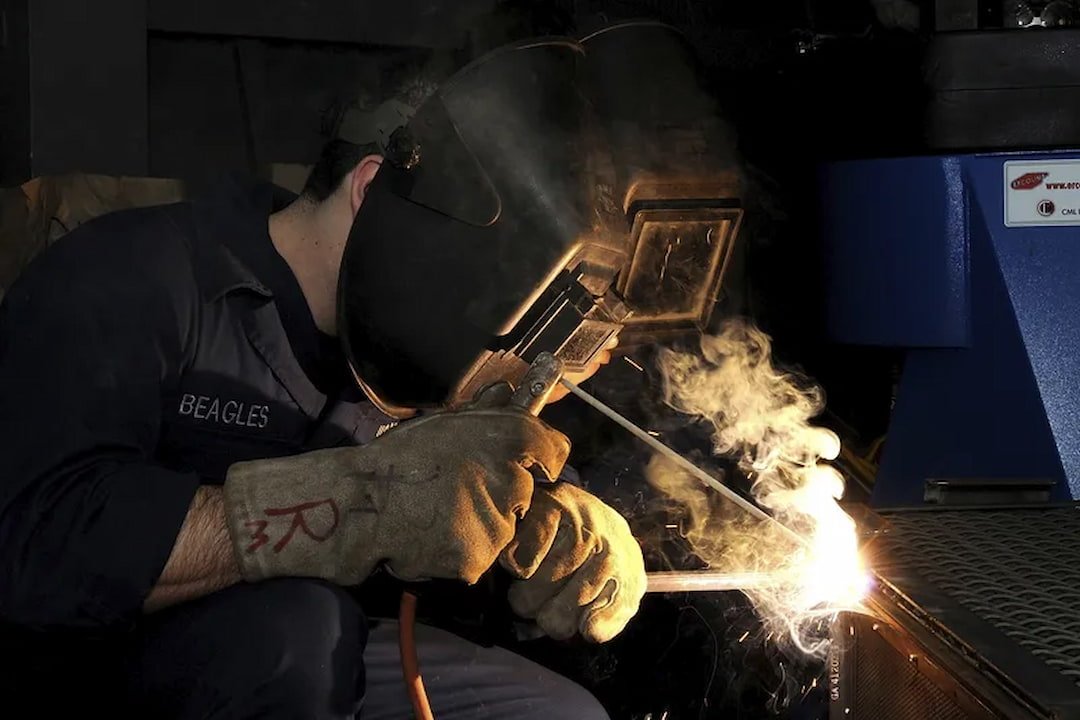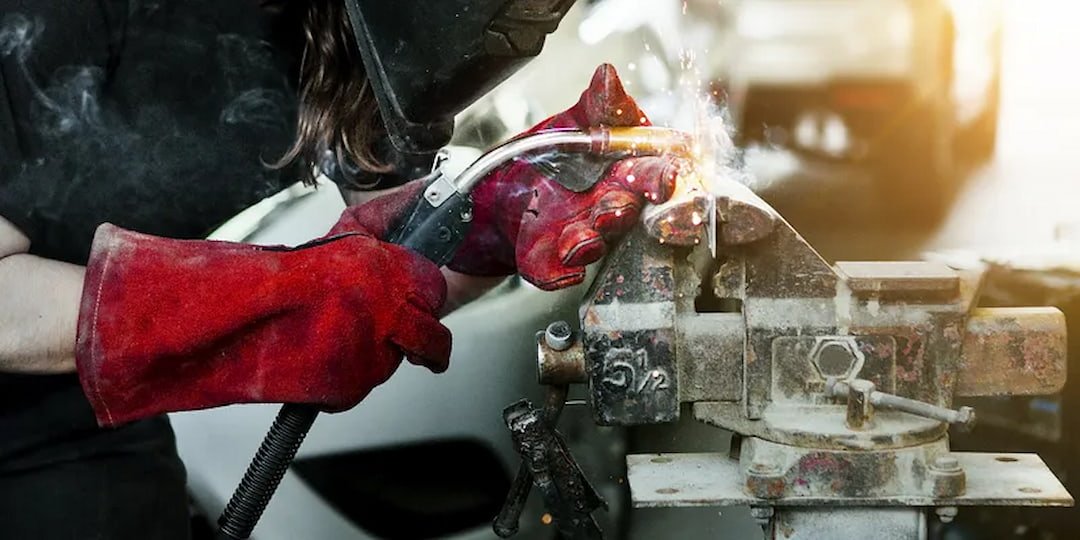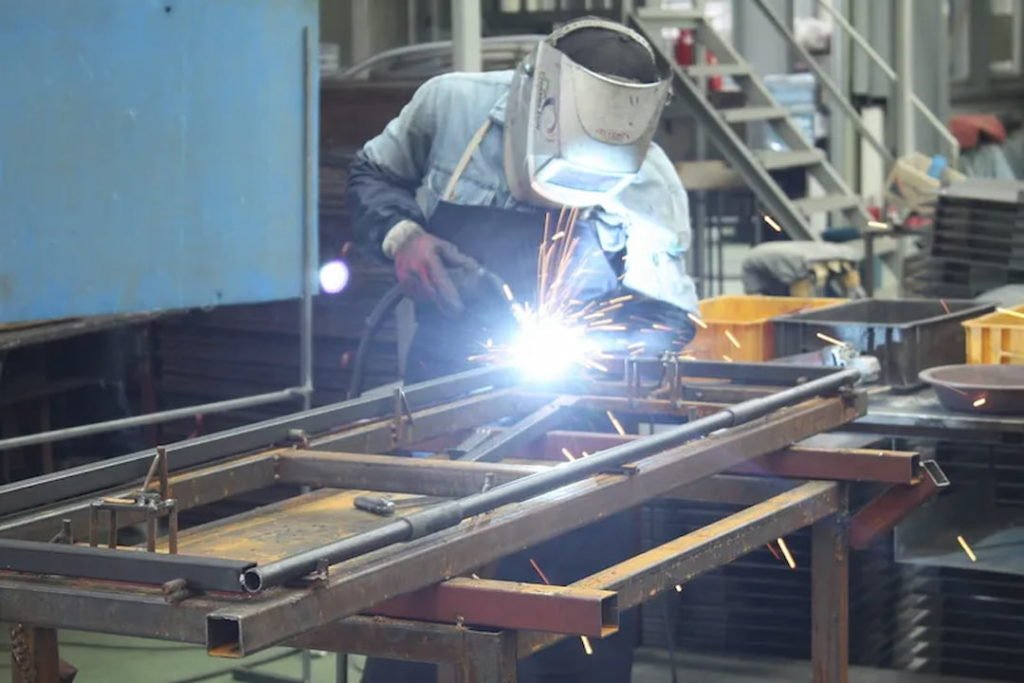Can I weld aluminum using my stick welder? Yes, you can weld aluminum with the stick welder, even if it's technical, can get messy, and needs a bit of skill. It's not impossible, as some welders say; in fact, here's how to weld aluminum with a stick welder.
Table of Contents
Key Takeaways
- Aluminum stick welding uses the same process as steel or carbon SMAW welding.
- Al welding requires keen attention to the rod type, angle, and spatter clean-off.
- DCEP works fine for thick aluminum welds, while AC is fine for thinner welds.
- SMAW of aluminum differs from the other metals because of the spatter and the heating required before welding.
In this article, you'll learn the best way of welding aluminum using the SMAW process and its intricacies. We'll also examine why it is challenging and the best arc weldings for welding aluminum. Have a look.
How to Weld Aluminum With a Stick Welder
You need a stick welder, aluminum electrodes, an acetylene torch, a new steel wire brush, a sledgehammer, a file, and typical stick welding protective gear, as you'll see in step 3.
Please have at least three rods because they burn up fast, and you'll use more than you thought. Stick-welding aluminum works best on thicker materials—ensure it's at least a 1/8-inch rod and work your way up depending on the aluminum alloy you're welding.
If you have a specific wire brush you use for welding aluminum, utilize it. Here, avoid using a grinder to remove the oxide layer. That's because it has a folding-of-the-oxide-layer effect it produces instead of removing the layer. A chemical method also works.

What Is the Best Way to Weld Aluminum With SMAW?
Like typical stick welding methods, aluminum welding follows the usual steps. But some notes are worth remembering, as seen above. Here's the step-to-step process:
Step 1
Have your welding machine ready and ensure your welder has adjustable amperage. You want to adjust the amps to put out enough heat that suits the welding rod's diameter and thickness.
Step 2
Choose suitable aluminum welding rods. Here, look out for the thickness of the welding workpiece. Standard aluminum stick rods are the 4043 rods. What do welding rod numbers mean? The one you choose should correspond to the metal you're welding.
Step 3
Put on welding safety gear. You want a leather jacket, an auto-darkening welding helmet, gloves, glasses, and boots.
Step 4
Prepare for welding by making ready the surfaces. Remove the oxide layer on the aluminum using a new stainless steel wire brush. We want the joint to be strong by removing any contaminants.
Step 5
Fit your filler metal and the base metal. Fitting the pieces helps eliminate the usage of excess filler material. Consider using a solid block or an earth clamp to hold the pieces together so that you don't need to touch them.
Step 6
Set your welder to the suitable amperage and polarity according to the rod you'll use. That's because a 3/32-inch rod requires 80 amps, a 1/8-inch uses up to 130 amps, while a 5/32-inch uses between 100 and 160 amperes. Most electrodes work well with DC Electrode Positive, denoted as DCEP.
Step 7
Now weld the aluminum. Heat the surface while focusing the heat on the joint. The challenge is the arc movement and mastering the usage of the proper welding angle.
Move relatively faster than in typical carbon and steel stick welding processes. Slower movements burn through the base metal, especially welding thin aluminum. Yet, rapid movements won't give good penetration, which will cause weaker welds.
The arc length should be short. Maintain a short arc such that while welding aluminum, keep the tip close so that you feel the flux coating on the rod burning along while welding.
The welding angle should be steep, only tipping the electrode towards your endpoint.
Step 8
Finally, finish and clean off. While completing aluminum welding, avoid abruptly switching the welder. Backtrack to fill the point of termination. Aluminum stick welding produces spatter and slag. Use a sledgehammer to remove the spatter, slag, and file to smoothen the finish.

Why Is Stick Welding Aluminum Difficult?
In step seven above, where you start the stick welding process, stick welding aluminum gets technical. The reason for being difficult is the experience and skill required to master the speed of movement, angle, and direction of welding motion, and the afterward spatter and slag removal.
Some welders avoid welding aluminum altogether as it increases the risks of pneumoconiosis.
With proper practice, it shouldn't be much trouble. What helped me was taking exercises to master the speed of movement and angle. My auto-darkening welding helmet certainly helped with the precision of my welds. Also, cooling the finished weld by dipping it in the water helped remove the spatter.
Then, there's the issue of avoid thinking about the possible mistakes you may make when stick welding aluminum.
Common Mistakes When Stick Welding Aluminum and How to Avoid Them
Despite the widespread perception that aluminum is more difficult to weld than steel, this is mainly due to welders bringing their experiences of welding steel to welding aluminum.
Storing Wire Improperly
One mistake that can cause problems is storing wire in an air-conditioned environment. If the wire is opened immediately on a hot, humid day, the humid air can condense on the wire. To avoid this, it is necessary to bring the wire out into the shop unopened and let it sit there until it has warmed up.
Using Preheat
Despite the widespread perception, preheat is rarely necessary with the correct equipment for welding all aluminum welds, both GTAW and GMAW. In addition, excessive preheat can severely damage mechanical properties and weld quality.
Bad Alloy Selection
This refers to welding aluminum in general: all of the alloys in the 1XXX, 3XXX, 4XXX, 5XXX, and 6XXX ranges are arc weldable. However, the aluminum alloys in the 2XXX and 7XXX series are not weldable.
The correct alloy should be matched to the correct filler metal before welding. The most common stick welding aluminum process that works is joining one of the 5XXX Al-Mg sheet/plate alloys – such as 5052, 5154, 5454, or 5083 – to themselves. Another way is to join 6XXX extrusion alloy to one of the 5XXX alloys.
Inadequate Storage of Welding Rods
Welding rods must be stored in a clean and dry environment, best in their original packaging so they doesn't get wet. Rods should be stored in dry conditions. Rods that have been used to some extent need to be put back into their packaging. You should never leave them on your welding machine torch for extended periods of time out in the open.
Ineffective Cleaning
Cleaning aluminum before welding consists of two processes. All oils, lubricants, machining coolants, or other hydrocarbons used in manufacturing need to be removed to avoid weld contamination and weld porosity.
Removing hydrocarbons can be done in one of two ways. What most welders do is wipe the weld with a clean rag soaked in a reliable degreasing solvent, such as acetone, toluene or methyl ethyl ketone. The solvent should be changed often to avoid repeated contamination of the surfaces you have cleaned before.
Alternatively, the parts you intend to weld can be immersed in a hot alkali solution, such as a strong solution of caustic soda or trisodium phosphate. You should rinse all the soaked parts in hot water afterwards.
Aluminum parts that have been exposed to the atmosphere develop an oxide film on their surface. This film must be removed before welding to ensure good fusion. Mechanical abrasion with a clean stainless steel wire brush or abrasive pad is really effective in removing this film. It is important to note that the oxide film reforms rapidly, particularly in humid conditions. This is why you should start welding aluminum as soon as possible after cleaning.
Incorrect Welding Technique
Remember to use these welding techniques:
• Tack weld parts before final welding to minimize distortion.
• Avoid starting or stopping the weld at the edge of the joint. Instead, start and stop the weld in the middle of the joint and tie in the welds at the end.
• When welding thin materials, use a back-up bar as this will prevent burn-through.
• Use the correct travel speed and amperage to ensure good penetration and fusion.
• Avoid excessive heat input, which can cause distortion and reduce mechanical properties.
• Shielding gas should be of high purity and the flow rate should be set according to the manufacturer’s recommendations.
• It is important to ensure that the tungsten electrode is sharp and clean. A contaminated electrode can cause arc instability and poor weld quality.
What Polarity Do You Need to Stick Weld Aluminum?
The polarity required for stick-welding aluminum is DC Electrode Positive, denoted as DCEP. DC stands for Direct Current. The metal has a low melting point and high thermal conductivity.

Alternatives to Stick Welding for Welding Aluminum
Tungsten Inert Gas welder using Alternating Current is an excellent alternative method to stick welding aluminum. It gives the welder reasonable control over the welding process and leaves less spatter. The technique is perfect for welding thin aluminum helium or a mixture of argon as shielding gas. DC TIGW is ideal for thicker material because of its deeper penetration.
Another alternative is Metal Inert Gas (MIG welder), which is faster than TIG. But compared to TIG, it gives lesser control, but with proper equipment setup, it will do the job.
Flux Core welder is not an alternative. We dedicated a detailed guide to explain why Flux Core welding cannot be used to weld aluminum.
Frequently Asked Questions
What Are the Pros of SMAW of Aluminum?
The pros of Aluminum SMAW are suitable working conditions. That's because you don't need a shielding gas. They are also flexible for outdoor usage.
What Are the Cons of SMAW of Aluminum?
The cons of SMAW of Aluminum are the following. Messy outcomes due to spatter and slag. Also, Yielding a clean weld with aluminum requires extensive experience. And it takes a lot of work to carry it out with thinner material.
Is There a Welding Rod for Aluminum?
Yes, there is an aluminum stick rod. The welding rod is usually more rigid than the steel one. That's good because it reduces parent material distortion as you weld.
Do You Push or Pull Aluminum Welding?
When welding aluminum with SMAW, you pull. But when using MIG, you push it away from the welding puddle. It gives it a cleaner action and has improved coverage for the gas coverage.
